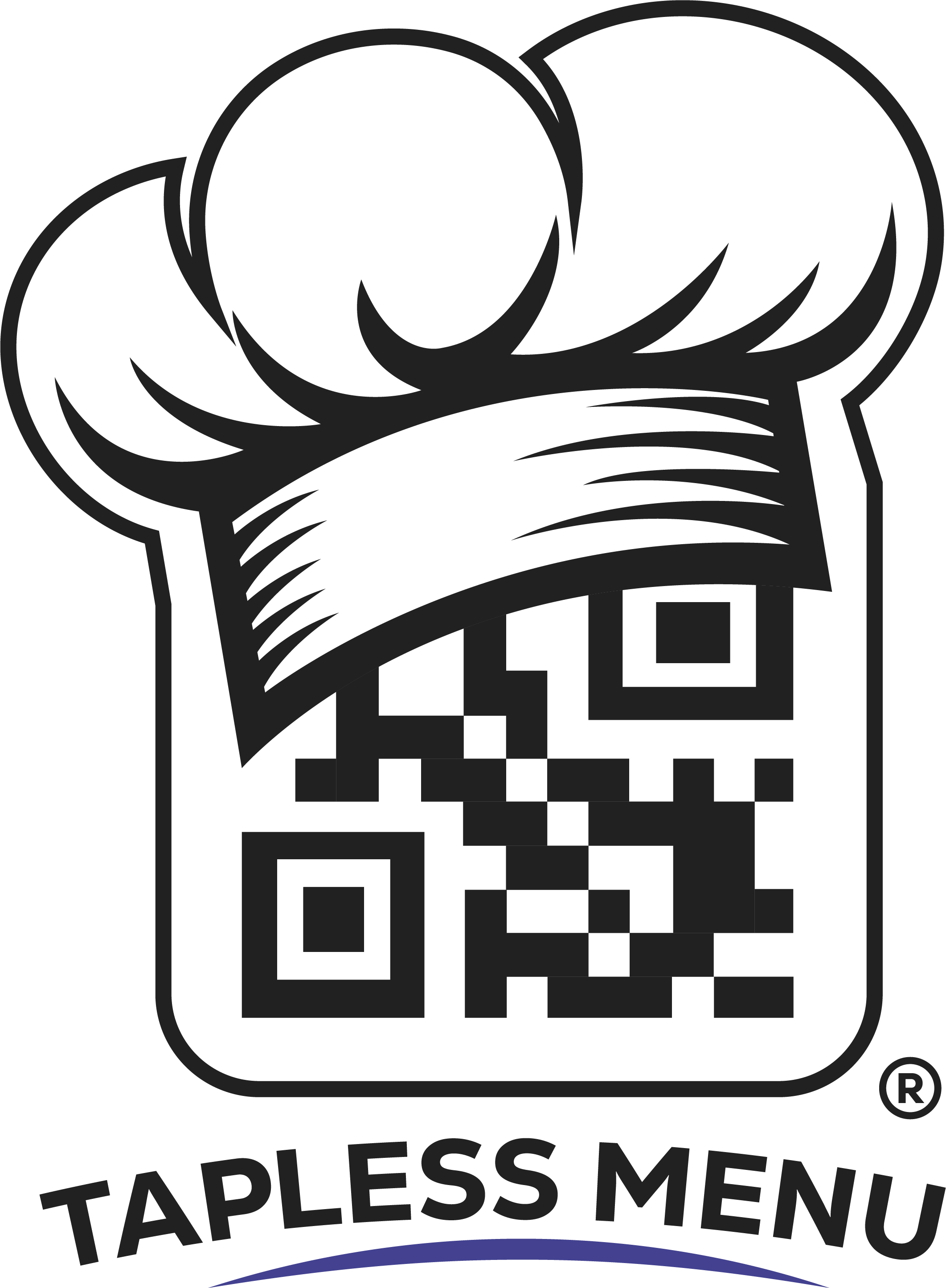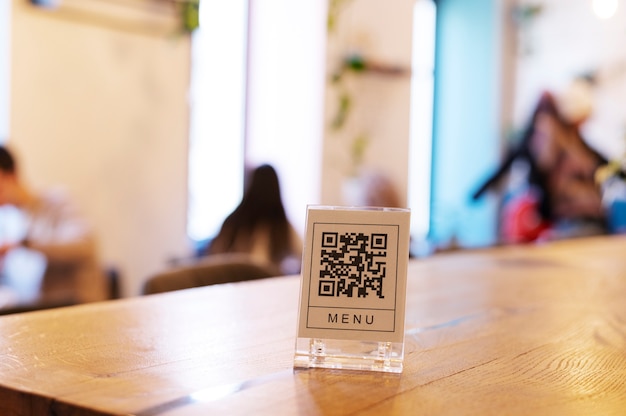For restaurant owners in today’s digital age, implementing technology-driven solutions has become essential to stay competitive, enhance customer experience, and boost revenues. One innovation that is fast gaining popularity across dining establishments is QR code-based ordering.
QR (quick response) codes are scannable barcodes that can store information such as website URLs, payment details, or menu items. When customers scan these using their smartphone camera, it redirects them to specific content or actions online.
Adopting QR code ordering systems has numerous advantages for restaurants, especially in a post-pandemic world where contactless solutions are the need of the hour. Let’s explore some of the key benefits:
Convenience and Accessibility
With QR code menus, customers can easily access the restaurant’s offerings on their own phones. This spares them the inconvenience of waiting for servers to hand out printed menus or reading menu boards from afar.
It also makes the menu accessible for people who’ve forgotten their reading glasses! The ability to enlarge, browse at their pace, and discover dishes through photos and descriptions enhances the user experience.
For the staff, it reduces time spent on handing out menus and fielding questions about the menu. They can instead focus on hospitality and service.
Contactless Ordering
In the wake of COVID-19, restaurants have implemented various contactless dining solutions for safety. QR codes perfectly fit into this, enabling touch-free order placement.
Customers simply scan a code placed on their table which leads them to the online menu. They can comfortably browse options, customize orders, and pay online without needing wait staff to come close.
It minimizes person-to-person contact which is reassuring to health-conscious diners. For restaurants, it also reduces the risk of virus transmission via tables and menus.
Operational Efficiency
With immediate digital access, customers don’t need to wait for servers to take their order. This enables them to place orders at their convenience, even before being seated!
For the kitchen, it means early notice to prepare dishes in an organized manner. The streamlined process reduces order confusion, speeds up food prep, and enables prompt service.
For servers, taking orders directly on tablets or computers is faster and more accurate than manual notation. It prevents misunderstandings over illegible handwriting or confusion between menu items.
Together, this seamless communication results in quicker table turnarounds and the ability to serve more covers without being overly rushed.
Increased Order Frequency
Studies show that digital menus can increase order frequency and size. Customers tend to order more items when they have time to review the menu carefully and visualize dishes.
Visual depictions also elicit more cravings than simple text descriptions. With easy access to item details, cost, and images, people are likely to add on items like appetizers, desserts, and beverages.
Higher order values are attractive to restaurant owners as they directly boost revenues per table. It also indicates customers are finding more value for money in the menu.
Enhanced Menu Customization
Digital menus allow restaurants to highlight different dishes, share preparation details, and cross-sell meal bundles or combo offers.
Customers also have the ability to customize their orders according to preferences, whether it’s choosing burger toppings or salad dressings.
All this leads to increased order customization for an elevated dining experience where customers get to enjoy meals their way.
Streamlined Payment Process
QR code systems enable automated payment processing through the ordering app itself, eliminating bill settlement after the meal.
For customers, it’s more convenient than waiting for servers to process multiple bills, specially, during lunch hours.
For restaurants, it allows quicker table turnarounds, especially during peak hours. It also reduces errors in cash/card settlements that occur with traditional billing.
Better Customer Analytics
A major advantage of digital menus is the wealth of data restaurants can access. The system captures real-time analytics on menu views, items ordered, daily analytics, referrer sources, customer countries, devices, browsers and operating systems used, with the ability to receive analytics reports by email.
This data enables fact-based decisions on pricing, new item additions, menu layout improvements, targeted promotions, inventory management, and overall strategy.
Enhanced Marketing and Promotions
With a digital system, restaurants can run targeted campaigns and promotions to drive traffic during lean days.
For instance, happy hour or lunch-only discounts can be displayed on the menu during those times to attract patrons. Specials for weekends or holidays are easier to promote, too.
The platform also enables loyalty programs and customized incentives for regulars. Seasonal menu offerings, chef specials, new item launches, and more can be effectively marketed through the ordering app.
Simplified Menu Updates and Changes
Print menus need full overhauls with every change in dishes or prices. But digital menus can be updated in real-time with a few clicks.
This allows restaurants to make changes without hassles or waste. Temporary tweaks, such as daily specials, can also be easily incorporated in the digital menu.
It thus gives flexibility to experiment with new offerings, limited-time items, and festive options to delight customers.
Environment Friendly
QR code menus are plastic-free and paperless, making them an environment friendly choice for sustainable restaurants. Hundreds of printed menu cards are saved annually along with plastic laminate coating waste.
For customers, too, it creates a dining experience free of paper wastage and one they’re likely to appreciate.
Enhanced Branding and Design
Digital menus allow extensive customization to reflect a restaurant’s unique brand identity. Owners can incorporate brand colors, fonts, logos and graphics into the menu design easily.
Compelling food photography and aesthetic layouts make the menu engaging. Cover pages allow restaurants to share their brand story or highlight signature offerings.
This creates memorable digital menus that customers are eager to explore, not just functional text-based ones. The appeal often transfers onto the overall brand.
Cost Savings
A major incentive to adopt digital menus is significant cost reduction versus printed menus. Thousands of dollars can be saved annually on menu printing, binding, and updating costs.
There’s also reduced waste when dishes run out or change, as updates happen electronically. Other savings come from reduced server time spent on order taking.
Together, these cut operational costs, enabling restaurants to offer more competitive pricing. Technology adoption also boosts profit margins through the benefits discussed earlier.
FAQs
What are the technology requirements to implement QR code menus?
- Smartphone/tablet: To scan codes and access online menus
- Stable internet: For seamless menu loading and order processing
- Code generator software: To create and customize QR codes
- Ordering system software: To build, manage, and process orders
How are QR code menus implemented in restaurants?
- Print QR codes on table tents or placemats for customers to scan
- Embed codes into existing printed menus to bridge digitization
- Display codes around the restaurant – at the entrance, waiting areas, restrooms
- Share codes on social media, website, e-mail newsletters for online access
How do customers pay for orders placed via QR code menus?
- Online payment gateway: Accept credit cards digitally via the ordering system by easily implementing, Stripe, PayPal, Mollie and cash options.
What happens if a customer cannot scan the QR code?
- Servers can assist by scanning the code via their restaurant device
- Help customers access menu through direct website URL
- Have a few printed menus on hand for those uncomfortable with digital
How do restaurants track orders from QR code systems?
- Orders are directly sent to the designated email addresses. You also have the flexibility to add multiple team members to receive these notifications.
- Unique order IDs help staff deliver items accurately during pickup
- The tableside ordering system links each order to the customer’s table number, making it easy for servers to deliver items to the correct table
Revolutionize Your Restaurant with Tapless Menu
As we’ve seen, QR code digital menus have compelling advantages when compared to traditional printed menus. They enhance customer engagement, raise profits, and help position your restaurant for long-term success in the digital age.
Tapless Menu offers an easy, customizable, and cost-effective platform to create mobile menus. With Tapless Menu:
- Build stunning branded menus with your logo, colors, fonts, and professional food photos
- Get a custom-coded mobile menu up in just five minutes
- Provide guests a convenient QR code scanning and online ordering experience
- Access powerful data and analytics on customer preferences
- Update menus in real-time and highlight daily specials or discounts
- Manage unlimited menus across multiple restaurant locations
With Tapless Menu, you can ditch printed menus and transform your customer experience starting at just $19.99 per month.
There are no commissions charged on orders, no hidden fees, and no lengthy contracts. The software is designed for easy setup by restaurateurs, not tech experts.
You get complete ownership and control over your menu design, items, pricing, and data. You also retain flexibility to switch, pause, or cancel plans at any time with no cancellation fees.
Tapless Menu offers a free 7-day trial so you can experience the benefits firsthand. Simply sign up online and get building your digital menu!
With Tapless Menu, say goodbye to outdated printed menus and transform how your customers engage with your restaurant. Adopting QR code technology shows you are digital-ready, while tapping into data-driven insights helps deliver more personalized service.

